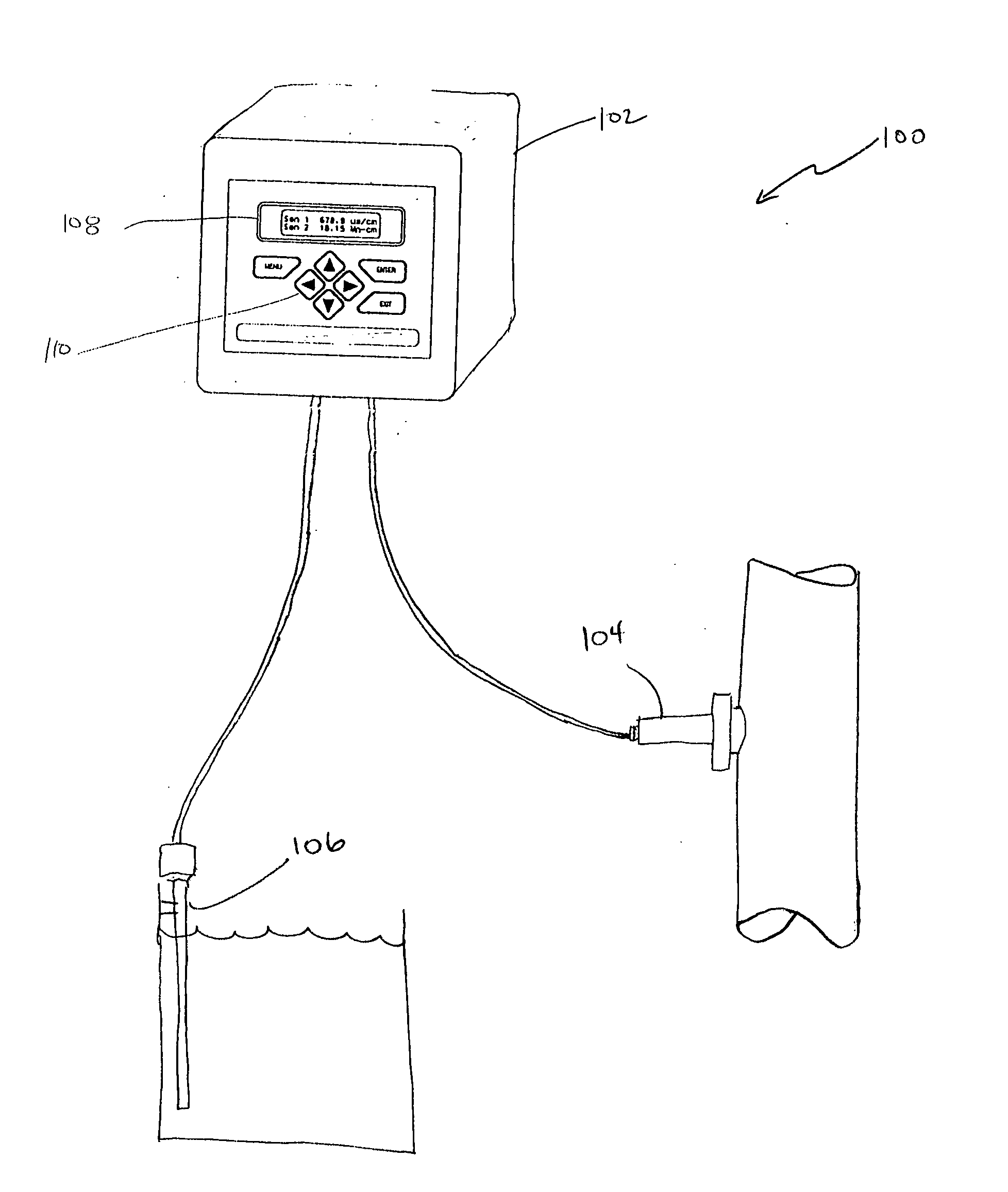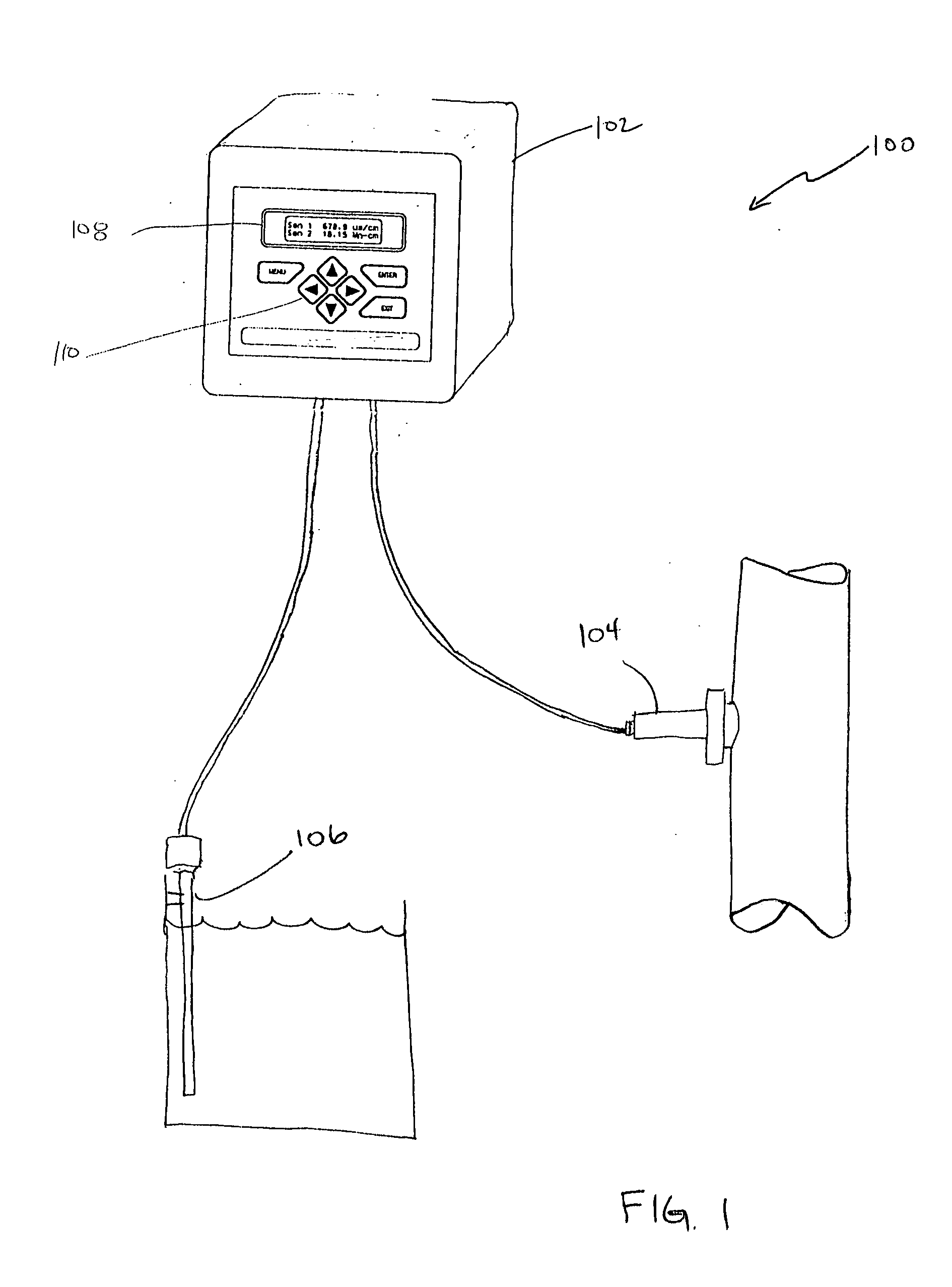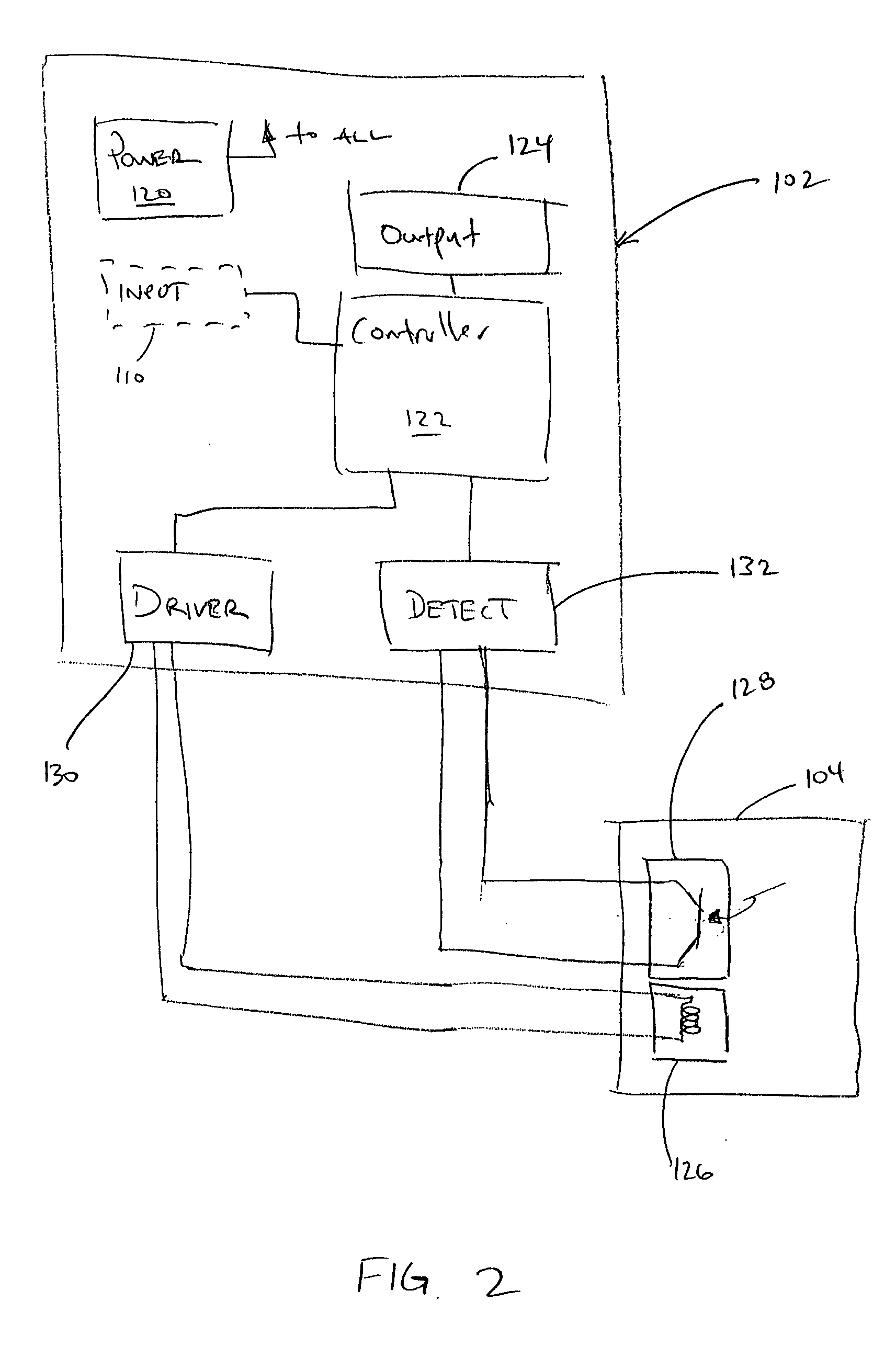Turbidity sensing system with reduced temperature effects
a turbidity sensor and temperature effect technology, applied in the field of turbidity sensors, can solve the problems of erroneous evaluation results of turbidity signals, turbidity measurement systems almost invariably, and turbidity measurement systems, and achieve the effect of improving thermal behavior
- Summary
- Abstract
- Description
- Claims
- Application Information
AI Technical Summary
Benefits of technology
Problems solved by technology
Method used
Image
Examples
Embodiment Construction
[0014] While embodiments of the present invention will be described with respect to removing “dark current” related to temperature from turbidity measurements, embodiments of the present invention are practicable with any photosensitive element having a variable dark current, which variability is undesired in photosensing.
[0015]FIG. 1 is a diagrammatic view of turbidity sensing system 100 with which embodiments of the present invention are particularly useful. System 100 includes a turbidity analyzer or meter 102 coupled to one or more turbidity sensors 104, 106. Turbidity sensors may be any suitable types of turbidity sensors including an insertion-type turbidity sensor 104, and / or a submersion-type sensor 106. Further, any type of electromagnetic radiation may be used as illumination for the turbidity sensors. For example, sensors in compliance with U.S. EPA regulation 180.1 that use visible light can be used. Additionally, sensors in accordance with ISO 7027, which use near infr...
PUM
| Property | Measurement | Unit |
|---|---|---|
| turbidity | aaaaa | aaaaa |
| dark current | aaaaa | aaaaa |
| digital turbidity | aaaaa | aaaaa |
Abstract
Description
Claims
Application Information
 Login to View More
Login to View More - R&D
- Intellectual Property
- Life Sciences
- Materials
- Tech Scout
- Unparalleled Data Quality
- Higher Quality Content
- 60% Fewer Hallucinations
Browse by: Latest US Patents, China's latest patents, Technical Efficacy Thesaurus, Application Domain, Technology Topic, Popular Technical Reports.
© 2025 PatSnap. All rights reserved.Legal|Privacy policy|Modern Slavery Act Transparency Statement|Sitemap|About US| Contact US: help@patsnap.com



